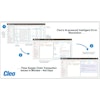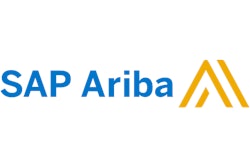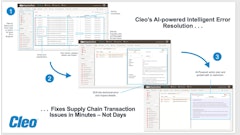When was the last time you wrote a check? Has your phone replaced your wallet and the majority of the credit cards in it? Do you swipe your finger on an iPad or smartphone more often than a credit card terminal to pay for things?
Our personal lives have been digitized, mobilized and even simplified by technology. But things remain complicated on the work front—particularly when it comes to payments. In today’s connected economy, it seems unfathomable that the majority of payments between businesses—more than 60 percent by some estimates—are still made using checks.
And it’s creating major headaches for businesses looking to effectively manage their cash. According to research from independent research and advisory firm Ardent partners:
The top payments challenge for AP departments (42 percent) in 2014 was that their payment approvals take too long.
It costs the typical AP organization nearly $8 to schedule and make a single supplier payment.
It takes the average AP department more than 12 days to process an invoice, which is why more than 58 percent of all AP departments fail to capture any early payment discounts from their suppliers.
“It’s a vexing problem on both sides of the equation,” says Drew Hofler, Manage Cash Solutions Marketing Director at Ariba, an SAP company. “Buyers are drowning in paper and bogged down by inefficiencies that cost their companies billions each year. And sellers have little visibility into when they will be paid, and when they do get checks, it’s often tough to figure out what they were actually paid for, making it difficult to reconcile things.”
Digitizing the “Pay” in Procure-to-Pay
But the move is on to solve these problems. Just as technologies have emerged on the consumer front to make paying for things electronically more convenient, easy and secure than ever, a new breed of solutions designed to digitize the “pay” in procure-to-pay have arrived on the business scene. And innovative organizations are embracing them in an effort to change the game.
“Our research over the last five years shows that the use of electronic payments in the B2B market is on the rise, having captured the attention of finance and AP leaders around the globe,” says Andrew Bartolini, Chief Research Officer at Ardent Partners and author of “Emerging Strategies and Best-in-Class Performance in B2B Payments. “Paper checks, while still prevalent, are in retreat from ePayment methods such as ACH, commercial cards and wire transfers that can all reduce costs while also improving the level of visibility and accuracy in the vendor payment process.”
Consumerizing Business Commerce
And then there are solutions that leverage the connectivity of the Internet, the insights of networks, and the agility of cloud applications to help companies collaborate around B2B payments in completely new ways. Just as ApplePay is attempting to eliminate payment risk for consumers, for instance, services like AribaPay are looking to do the same for businesses.
Delivered via SAP’s Ariba Network, the service coordinates the ordering, billing and settlement processes between buyers and sellers and integrates with the global payments infrastructure of Discover Financial Services, providing a secure and accurate way for businesses to exchange payments electronically.
Changing the Game
And it’s changing the game for companies like Hayden Professional Services, Inc. As a provider of cell tower construction services, the 10-person company relies heavily on contractors. And it must pay them upfront, along with associated fees like permits and inspections, making visibility into the timing and amount of payments from customers critical.
“We need to be able to see what’s pending and when money is going to be deposited to move forward,” says Hayden office manager Lisa MacPherson. “But typically, we would just get a notification that an invoice has been paid.”
As a result, MacPherson used to spend the majority of her time trying to figure out which invoices were outstanding and why—a process she said could often take up to a year.
All of this changed, however, when a major customer began using AribaPay and Hayden Professional Services agreed to sign on. Now, MacPherson no longer has to guess when invoices will be paid or why there may be a delay. A detailed payment schedule provides her with a clear view into the status and outlines any action that may be needed to move things along.
And when an invoice has been paid, MacPherson is not only automatically notified, but receives detailed data that shows what a payment represents at the invoice and line-item level—fueling faster, more accurate reconciliation.
Hayden Professional Services now sees payments in 45 to 90 days as opposed to five to six months. And this, she says, is helping fuel growth. “The time we used to spend chasing after things can now be put toward getting new projects executed.”
Agents of Change
Emerging payment technologies are certainly disruptive. But companies that ditch their manual ways for automated solutions will see less paper. They will suffer less risk and put less effort into managing bank account information and related data. They will uncover and resolve disputes faster, monitor on-going payments better and lower their processing costs and fraud risk. And, Bartolini notes, transform their business in the process. “Automating B2B payments, the ‘last mile’ of the P2P process can create an interconnected, automated world that provides financial prowess and deep intelligence, turning B2B payments into a strategic business process,”
he said.
2015: The Year B2B Payments Get Fixed?
Consumer payments took a huge leap forward in 2014 as technologies emerged to make paying for things electronically more convenient, easy and secure than ever. Businesses around the world took steps—albeit small ones—to improve what remains a largely manual, error-prone and risky process. And they’ll continue to do so in the year ahead. Here are four things you can expect:
1) Risk mitigation will become a priority
As attacks on corporate payment systems continue, the risk around maintaining vendor bank account information has gone from a smoldering issue to a blazing one. To mitigate their exposure, companies will turn to innovative payment methods that use non-sensitive proxy numbers that prevent hackers from doing anything with numbers should they somehow gain access to them.
2) Offloading will increase
Payments are a necessary part of commerce. But managing them requires capturing, storing and managing sensitive information, complying with complex regulatory requirements and validating the identities of those seeking to be paid. Rather than taking this on, many companies will offload the payment process to organizations that specialize in it.
3) Electronic payments will take hold
Electronic payments have been slow to take hold in the United States, primarily because paper checks—though opaque, slow and prone to fraud—provide all the information needed to effectively reconcile payments. But new forms of payment that electronically deliver rich remittance data before payments reach a bank are fast emerging. And vendors will embrace them to enhance the reconciliation process and get paid more quickly.
4) Business networks will lead the way
When shopping on Amazon, you don’t worry about connecting to each individual merchant. When it comes time to pay, you don’t worry about integrating into each individual bank or credit card company. It’s all done for you within the network. Business networks will fuel the same consumer-like experience, creating a payment ecosystem that connects companies to their suppliers, banks and other partners and enables them to exchange and settle funds in the simplest possible way.
Is 2015 the year that B2B payments see real transformation? Technology certainly exists to make it possible. And companies that leverage it can drive it by fueling a more simple, efficient and effective process that creates real business value.
















